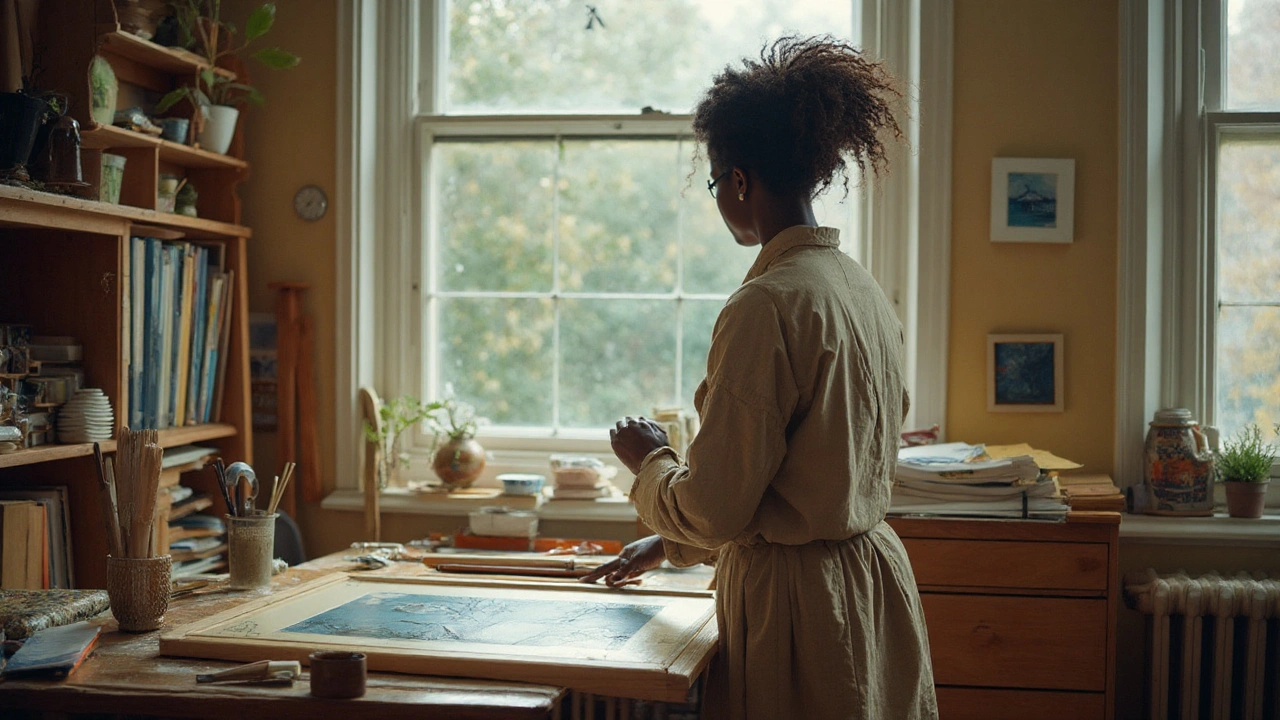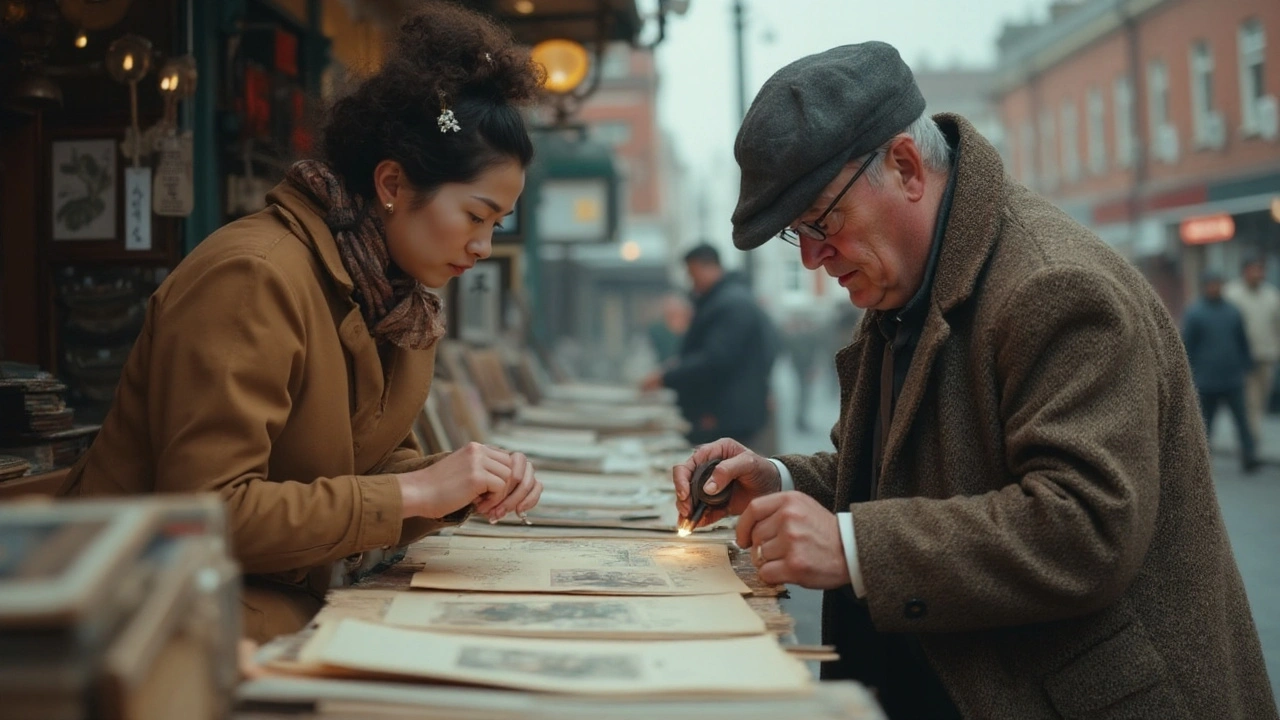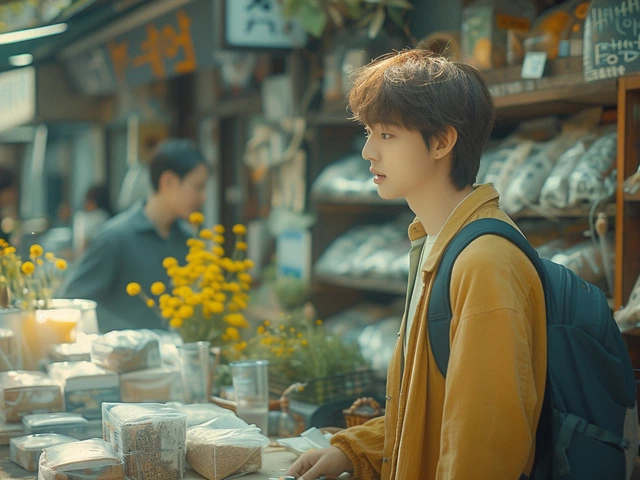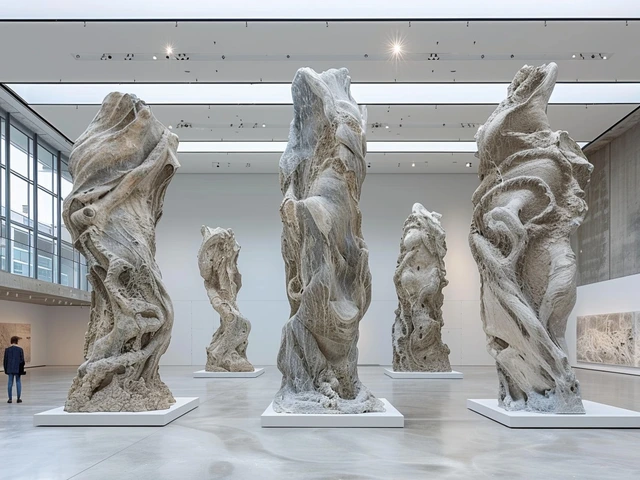Real ukiyo-e costs less than most people think-good prints often start under $300-but the traps are real: trimmed margins, reprints sold as originals, and bad framing that ruins paper. This guide shows you exactly how to buy confidently, what prices make sense in 2025, how to avoid fakes, and how to care for prints so they last. I’m in Melbourne, so I’ll also flag import GST and humidity tips that matter here.
TL;DR: Start Smart, Buy Better
- Pick a focus (artist, era, or theme) and set a per-print budget. Beginner sweet spot: AUD $300-$1,500.
- Only buy when the seller shows front, back, close-ups of seals, margins, and any flaws. No back photo, no deal.
- Authenticity basics: laid Japanese paper, a crisp keyblock line, period censor/publisher seals, and proper registration.
- Condition beats rarity at entry level. Avoid heavy trimming, backing, stains, and over-bright later colorings.
- Frame with UV-filter glazing and 100% cotton rag mats; reversible wheat-starch hinges only. Keep RH ~45-55%.
If your goal is a small, beautiful ukiyo-e collection you can live with and grow, this playbook gets you there without guesswork.
Step-by-Step: Build a Focused, Authentic Collection
1) Choose your focus. A tight focus makes choices easier and your collection sharper. Try one of these:
- Artists: Hokusai, Hiroshige, Kuniyoshi, Yoshitoshi, Hasui, Yoshida.
- Genres: landscapes (meisho-e), actor prints (yakusha-e), beauties (bijin-ga), warriors (musha-e), nature (kachō-ga), or modern movements (Shin-hanga, Sōsaku-hanga).
- Periods: Edo (1603-1868), Meiji (1868-1912), Taishō-Shōwa (1912-1989 for Shin-hanga/Sōsaku-hanga).
Rule of thumb: pick one anchor artist (e.g., Hiroshige), one supporting theme (rain, bridges, or snow), and one era. You’ll buy faster and regret less.
2) Set a budget and buying rhythm. For beginners, AUD $1,000-$3,000 total is plenty to start. A practical split:
- Per-print target: AUD $300-$1,500 (good vintage prints, some early 20th-century gems).
- “Anchor” piece: AUD $2,000-$6,000 when you find a standout (e.g., Hasui night scene with margins).
- Pace: one well-chosen print a month or quarter beats scattered impulse buys.
Heuristic: spend for condition and impression quality before chasing famous names. A strong Hiroshige in great shape beats a weak Hokusai.
3) Learn to spot authentic prints. You don’t need a lab, just a checklist:
- Paper: handmade Japanese washi (kozo/torinoko). Look for a soft, slightly fibrous surface. Under light, you may see long fibers; paper is thin but strong.
- Keyblock line: the black outline should be crisp and slightly impressed; later reprints often look mushy or over-inked.
- Registration: colors meet the key lines cleanly. Sloppy overlap suggests later editions or poor printing.
- Woodgrain: faint woodgrain patterns (mokume) in large flat areas can be a good sign of woodblock printing.
- Seals: Edo prints carry censor and publisher seals that date the block/printing; Meiji prints often list publisher/imprint. Use references like the British Museum seal catalog, Ukiyo-e.org, and the National Diet Library to match seals and dates.
- Edition clues: early impressions show fine hairlines and sharp bokashi (color gradation). Later printings may lose detail.
Good places to cross-check: Tokyo National Museum image notes, the British Museum’s online collection, and Ukiyo-e.org’s metasearch. For modern prints (Shin-hanga/Sōsaku-hanga), check Watanabe seals (Hasui) and Jizuri embossed seals (Hiroshi Yoshida) against published charts from the International Fine Print Dealers Association (IFPDA) and dealer monographs.
4) Know what you’re actually buying.
- Original period prints: pulled close to the block date (Edo/Meiji). Most desirable.
- Later printings from original blocks: often 19th-20th century; can be collectible but are worth less.
- Recarved later editions (e.g., Adachi Institute): high quality, clearly later; great for display, priced accordingly.
- Photo/mechanical reproductions (offset/giclée): decorative only. Don’t pay “antique” money for these.
Tip: If the colors look neon-fresh on an “Edo” print, be cautious. Early Prussian blue is vivid but not fluorescent. Ask for UV photos if unsure; modern optical brighteners can glow.
5) Pick safe buying channels.
- Reputable dealers: look for IFPDA membership or long-standing ukiyo-e specialists who publish condition reports and allow returns.
- Auction houses: Sotheby’s, Christie’s, Bonhams, and regional houses often run ukiyo-e sales. Factor in buyer’s premium (20-27%).
- Japan platforms: Yahoo! Japan Auctions via proxies can be good, but quality varies. Research seller history and insist on back photos.
- Fairs and print shows: in-person viewing teaches more in an hour than a month online. Ask if a loupe and back-lighting are okay.
Red flags: “museum quality” with no specifics, missing back images, cropped edges in photos, fuzzy seals, and no return policy.
6) Inspect condition like a pro.
- Margins: full or generous margins are a plus. Heavy trimming reduces value and cuts off seals.
- Folds/creases: centerfolds and album folds are common but discount-worthy.
- Backing: old album backing can hide wormholes and repairs. Ask if it’s laid down. Removal is a specialist job.
- Stains: foxing (small brown spots), toning (even yellow), tide marks (water damage). All should lower price.
- Color: uneven fading (especially reds) or over-cleaned paper (too white) suggests past treatment.
- Repairs: infills, overpainting, inpainting-ask for raking light photos.
Heuristic: If you can’t live with a flaw on your wall, don’t “trade off” for the name. There will be another copy.
7) Negotiate and close the deal. Ask: exact dimensions (sheet and image), all seals legible, block date, estimated print date, condition notes, previous owners, and return policy. For auctions, set a hard max and add premium, tax, shipping, and GST before bidding.
8) Care: frame and store safely.
- Framing: UV-filter acrylic (e.g., OP-3) or museum glass, 100% cotton rag mat, lignin-free backing, and reversible Japanese paper hinges with wheat-starch paste. No pressure-sensitive tapes.
- Light: avoid direct sun and bright LEDs. Target under 50 lux for display if possible; rotate wall time if you can.
- Climate: aim RH 45-55% and stable temperature. In Melbourne summers, a small dehumidifier helps; winter heating can dry-use a room humidifier to avoid brittleness.
- Storage: flat in archival boxes or solander cases, interleaved with unbuffered tissue (buffered is debated for some pigments). Sleeves should be polyester or polypropylene, not PVC.
For valuations and insurance, keep invoices, condition notes, and photos. Australian insurers often want a schedule for items over AUD $1,000 each and a valuation every 3-5 years.

Examples, Price Benchmarks, and Where to Buy in 2025
Starter sets by budget (realistic 2025 pricing in AUD):
- $500: One good Adachi reprint (Hokusai flower/bird) + one Meiji actor print with minor flaws.
- $2,000: Two solid Hiroshige 1850s landscapes (decent margins) + one Taishō-era Shin-hanga small format.
- $5,000: One standout Hasui night or snow scene (Watanabe seal) + one Kuniyoshi triptych panel in good state.
Where to look: Japanese print specialists (ask if IFPDA-affiliated), major auction houses, and museum deaccessions. Use museum catalogs as references: "Hokusai: Beyond the Great Wave" (British Museum), "Hiroshige’s 100 Famous Views" (various museum facsimiles), and Tokyo National Museum’s online notes for seals and publishers. Cross-check images on Ukiyo-e.org.
Australia-specific costs: artworks are typically duty-free, but GST (10%) applies to imports. Under AUD $1,000, GST is usually collected by the marketplace at checkout; over $1,000, you’ll pay GST (and any customs processing) on arrival. Check current rules with Australian Border Force and the ATO. Shipping with full insurance runs AUD $60-$200 for flat-packed international parcels.
Investment reality: Top impressions by Hokusai, Hiroshige, and Kuniyoshi can appreciate, but mid-tier prints are more about connoisseurship than returns. Buy what you love, in the best condition you can afford. When in doubt, hold cash for a great copy rather than filling gaps with weak examples.
Checklists, Heuristics, and a Quick-Reference Table
Pre-purchase checklist:
- Front, back, and close-up photos (seals, margins, any damage).
- Sheet size listed in millimeters; check against standard sizes (ōban ~370×250 mm).
- Block date and print date estimate, with seal identification.
- Return policy in writing; shipping and insurance costs confirmed.
- Provenance or prior collection notes if available.
Condition triage (pass/fail fast):
- Fail: heavy trimming cutting into image or seals, severe staining, brittle paper, fresh glues/tapes that bleed.
- Maybe: light toning, faint fold, minor wormholes professionally filled-price should reflect it.
- Buy: full margins or generous trim, clean sheet, strong impression, sound color.
Heuristics that save money:
- Pay a premium for state/edition quality, not just the name. Early state + good margins holds value.
- If the seller won’t photograph the back, walk away.
- When two copies are similar, choose the one with better bokashi and hairline detail.
- For Shin-hanga, prefer lifetime publisher seals (e.g., Watanabe pre-war) and jizuri embossing for Yoshida.
| Artist/Type | Typical Sheet Size | 2025 Price Range (AUD) | Notes |
|---|---|---|---|
| Hiroshige (ōban landscapes) | ~370 × 250 mm | $800-$5,000 | Condition sensitive; early impressions with rich blues command more. |
| Hokusai (non-Great Wave) | ōban/varies | $1,500-$12,000 | Famous designs spike; later printings drop value. |
| Kuniyoshi (warriors) | ōban/triptych panels | $700-$6,000 | Look for undamaged faces and armor detail. |
| Yoshitoshi (late Meiji) | ōban | $600-$4,000 | Popular; margins and color stability matter. |
| Hasui (Shin-hanga, Watanabe) | ōban | $1,800-$8,000 | Pre-war seals, pristine margins, night scenes price higher. |
| Hiroshi Yoshida (jizuri) | ōban/varies | $2,500-$10,000 | Jizuri embossing preferred for lifetime prints. |
| Adachi/Woodblock reprints | ōban | $150-$600 | Great display value; clearly later. |
Note: Price ranges reflect typical retail/auction hammer in 2025 for sound condition. Exceptional impressions or famous designs can exceed these bands. Use recent auction catalogs for comps.

Mini‑FAQ and Next Steps
Are bright colors a red flag? Not always. Early Prussian blue can be vivid. But neon reds/oranges on an “Edo” print can mean later printing or modern colorants. Ask for UV-light photos and raking light shots.
How do I tell an original from a reproduction? Originals show impressed lines, a tactile surface, and period seals. Reproductions (offset/giclée) look flat, have dot patterns or spray, and no impression. Compare seals with museum references (British Museum, Tokyo National Museum) and use Ukiyo-e.org to see known authentic copies.
Is trimming a dealbreaker? Slight trimming was common, but losing publisher/censor seals or image content hurts value. If the design breathes and the margins are even, it can still be a buy-at the right price.
Can I clean or deacidify at home? No. Water baths, bleaching, and deacidification should be done by a trained paper conservator. Ask for a treatment quote first; sometimes it’s cheaper to wait for a cleaner copy.
What about signatures? Edo prints were block-signed; you won’t see hand signatures. Shin-hanga and Sōsaku-hanga often have pencil signatures/editions. For Yoshida, look for jizuri embossing on lifetime prints.
Is ukiyo-e a good investment? Blue-chip pieces can appreciate, but the median market is steady. Buy the best impression and condition you can afford and expect enjoyment first, value second. Auction comps are your reality check.
How should I insure? Keep a collection log (artist, title, size, edition, seals, condition, purchase price, source, photos). In Australia, schedule items over your insurer’s threshold (often ~$1,000 each). Update valuations every few years using dealer appraisals or major auction results.
Next steps if you’re in Australia: Keep invoices for GST records. For imports over AUD $1,000, expect to pay GST on arrival; artworks are generally duty-free. Check Australian Border Force and ATO guidance. Melbourne humidity swings-aim for RH 45-55% at home, and rotate display prints to reduce light exposure.
Next steps if you’re buying from Japan: Ask sellers to ship flat between boards, not rolled. Confirm declared description as “antique paper artwork” with accurate value for insurance. Most ukiyo-e are exportable; designated cultural properties require permits-but that’s rare at entry level. Japan Post EMS or DHL with full insurance is standard.
If a print arrives rolled or tightly taped: Don’t force it flat. Let it acclimate in a clean, dry room for 24-48 hours. If still curled, consult a paper conservator for humidification and flattening; DIY moisture is risky.
If you suspect a misattribution: Compare cartouches and publisher seals to museum copies. Ask a specialist dealer or consult references like JAANUS and curated catalogs. Many dealers will help even if you didn’t buy from them.
If a seller refuses back photos: That’s your answer-skip it. Backing hides problems; good sellers know buyers need to see it.
Want to learn fast? Browse British Museum and Tokyo National Museum holdings side-by-side with auction PDFs. Pay attention to seal variants and condition language. One weekend of this will change how you buy.
Credibility note: For dating seals and editions, rely on primary references from the British Museum, Tokyo National Museum, National Diet Library, and IFPDA. For conservation best practices, look to the American Institute for Conservation and museum conservation departments. For taxes/imports in Australia, check current ATO and Australian Border Force guidance.




